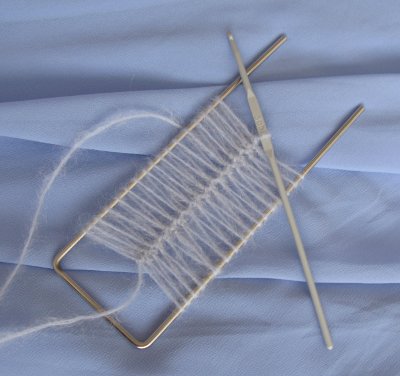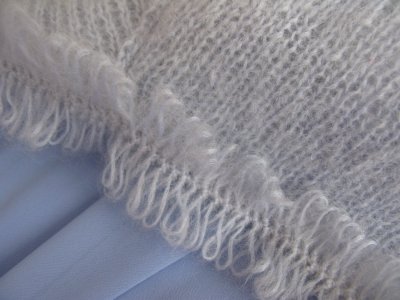So I begun to experiment with
different sized needles. I wanted a rather loose
stockinette knit which would be relatively easy to unravel
and also have some elasticity. When I was happy with my
test strip, I measured it to estimate the number of
stitches I should be using.
I began the sleeve by casting about 40 stitches. I thought it would be a good idea to knit the sleeves with 5 needles like socks. The only part of the idea which worked was that they were indeed easier to try on, but otherways it was a very bad idea – the I kept dropping the needles all the time, which wasn't very nice, especially as I knitted a lot in a bus, the places where the knit was continued on another needle showed very clearly, and for some reason the rest of it wasn't very regular either. At last I gave up and unraveled the first sleeve, and began anew with only two needles.
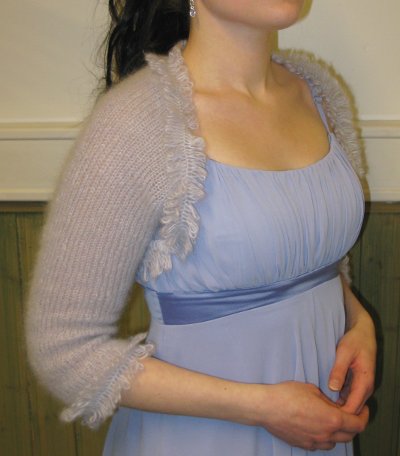
The round-knit attempt at sleeve had, however, served as a good mock up, and as it had been slightly tight on the upper arm I now cast the same number of stitches on the elbow but gradually increased in total 5 stitches on both edges. Now the knit was much more neat and regular, and I was happy to have taken the trouble to begin anew.
Having reached the armhole (again) I bound off 3 stitches (or so) in both edges, decreased some more in the next few rows to create a smooth curve, and then began to decrease one stitch every 6th row on both edges in order to create a raglan-shaped sleeve. After about 12cm I reached the estimated point of neckline, and began decreasing one stitch every second row in the front edge and one stitch every 4th row in the back. About 19cm from the armhole, close to neck I began decreasing one stitch on every row on front edge and one stitch every second row in the back, thus getting to the top of the sleevehead. Of course I tried the sleeve on several times in between knitting, which slowed the project down somewhat, but the knitting itself went pretty fast.
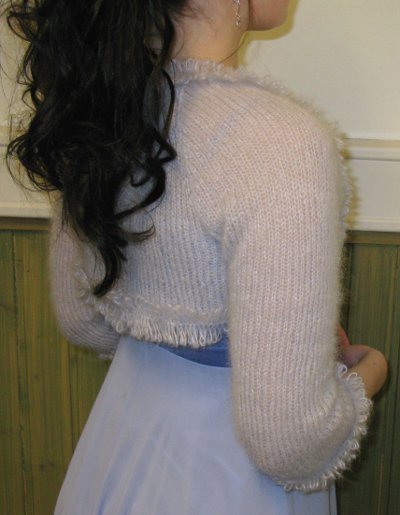
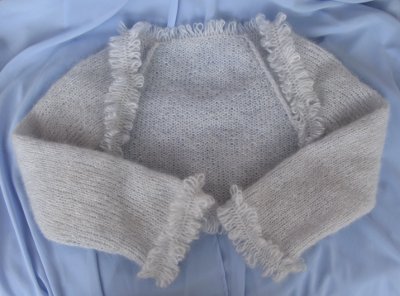
Now there was only left little pieces on the front edges. I cast the required stitches straight from the edge of the sleeve from side seam to neckline point, and began to knit, decreasing one stitch every second row in the front edge and increasing a few times on the side seam edge. Towards the end of the piece I decreased a stitch on every row, and when the side seams were about the same length I bound off the few remaining stitches, thus ending up with a smoothly curved edge.
I wanted the bolero to be quite plain, but not too casual, so I decided to edge it with crocheted hairpin lace, which is fast and easy to make. I sewed it on the edges, which finished them neatly and prevented them curling upwards, and created a pretty effect.
